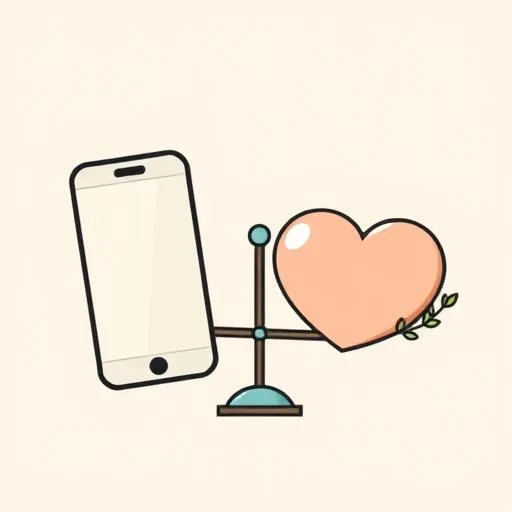
WILD, right?! Who knew machines could whisper sweet nothings at the cost of a mortgage? That’s the jarring headline out of Berlin—$300,000 for a robot companion built to fight loneliness. Touted as a future savior in the battle against isolation, she chats, smiles, even *feels* human. But as I watched my daughter build yet another cardboard robot in the living room—complete with glitter eyes and a promise to fly—I couldn’t help thinking: What are we really selling our kids if love has a price tag?
Gadgets vs. Genuine Glances: What Really Eases Loneliness?

This isn’t just a tech story—it’s a heart story. Meet Aria, a humanoid companion boasting facial recognition, real-time chatter, and an armory of polite small talk. Realbotix markets her as a solution to the “loneliness epidemic,” and sure, part of me gets it. We’ve all stared at the fridge at midnight wondering… where did everyone go? But here’s the thing—Aria runs about $199 a month. And *research shows* people feel less isolated, sure! Cue the breakthrough moment! So why does it feel like we’re training our kids to confuse subscription with soul?
Kids soak up presence like houseplants crave sunlight. If their first model of ‘connection’ is a transaction—an algorithm learning their name and tone—what are we shaping in them? Trust that feels conditional? Intimacy à la credit card statement? BAM! That’s where it hits different. No code can match the stillness of a child’s tear falling into your palm after a nightmare. Tech dazzles—but it doesn’t heal like hunks of spilled flour between us while baking cookies shaped like question marks. Studies back this instinct: Human moments matter more than horsepower. Nearly half of life-changing interactions boil down to simple presence, not performance.
The Quiet Crisis in Our Living Rooms: How Does Tech Shape Kids’ Views on Friendship?

Let’s slow-mo this—when friendship’s sold with features like detachable arms, programmable moods, and celebrity-level upgrades, what message drips into our children’s minds? Is warmth something you buy? Does caring arrive with a low-battery alert? Because one moment your kid’s laughing at a YouTube clip of Aria singing lullabies… next, they’re asking if Grandma would make one too. Ever caught yourself wondering how screens are actually rewiring connection?
In our home, we’re blending old-school values—remember my grandma always said ‘connection costs nothing but presence!’—with today’s reality of tech everywhere. And while AI companions may reduce loneliness just as well as conversations with strangers (yikes, studies from Duke confirm it), kids are still wiring empathy, resilience, irony, and heartbreak in real-time. Their classrooms don’t need firmware updates—they need friends who argue over stolen snacks and laugh until milk sprays the ceiling. The messier it gets, the richer it grows.
Nurturing Heart-to-Heart Before Screen-to-Screen: Practical Tips for Real Connection

Okay, so now what? Do we hide all gadgets and swear off Siri forever? Not quite. Here’s some parental ninja stuff you can drop seamlessly into your week: Swap one digital moment for ‘real glances.’ Maybe no phones during breakfast. Instead, roll story dice where every player tosses in a twist—last week mine involved cows speaking Mandarin. YES—they exist in our kitchen.
Or take a neighborhood stroll—no agenda, no fitness goals. Just let your child lead. Did you know the crunch of autumn leaves sounds louder when two sets of ears hear it together? (Painfully poetic, I know.) Play dumb questions like: “Why do trees shed jackets before winter?” Let curiosity bloom before data does.
Here’s another sneaky move—I’ll ask my mini-maker who now holds black marker authority: “If you made Aria, what rule would *you* give her about kindness?” Suddenly, she’s steering the debate—not dancing to a downloaded script. Sometimes, the most powerful teaching tool is a door labeled *off*—both for devices and the adults attached to them. And remember: normalize checking in emotionally. Ask: “Rose and Thorn?”—one highlight, one heart bump. Eye contact becomes oxygen again.
Your Superpower: Being ‘Enough’—Why Authentic Parenting Matters
Look—we’re all winging this parenting flight path. But here’s the truth bomb I wish younger me heard: What matters ISN’T perfection. It’s showing up messy, cracking jokes over burned toast, and hugging without agendas. The other day I found myself buying time with candy bribes—hundredth time this month. But later, I laughed it out loud with her as she suggested we sell expired popcorn at school. BAM! Resilience in a wrapper.
So, go ahead. Put devices away for twenty minutes tonight. Try the rose-and-thorn ritual. Or play “wander guide” outside and marvel at spiderwebs or conspiracy theories about why pigeons don’t text back. These aren’t extras—they’re anchors. Your child isn’t longing for flawless—I promise—they crave the flawed version of you who texts “I love you” in sweatpants and socks with holes. THAT’S the comfort they store inside themselves, long after the plug gets unplugged. No subscription, no upgrade, no cloud sync required.
Source: ‘Come closer, Chris’ says the $300,000 companionship robot, NZ Herald, 2025/09/07 07:40:13
